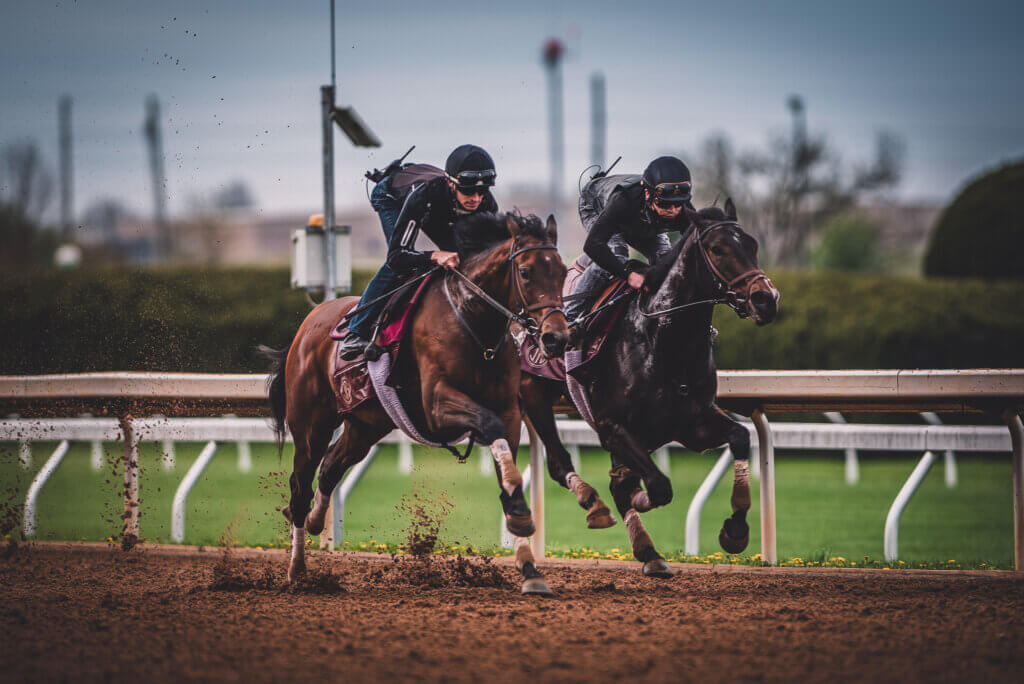Natalie Voss, Lameness Locator Turned One Veterinarian From Skeptic To Believer, Paulick Report, 20th February 2024. Read full article.
SUMMARY
The article discusses Dr. Joe Dowd’s transition from skepticism to belief in the effectiveness of the Lameness Locator, a sensor system used in veterinary medicine for diagnosing lameness in horses. Initially hesitant like many veterinarians, Dowd was introduced to the Lameness Locator at Santa Anita Park. This system, comprised of sensors and an accelerometer, measures changes in a horse’s movement, providing data on stride length, poll height, and hindquarter height, which helps identify asymmetries indicating lameness. Despite initial doubts, Dowd found the Lameness Locator to be a valuable tool for troubleshooting difficult cases and documenting subtle lameness that is hard to detect visually.
The article highlights the reluctance among veterinarians to adopt new technology like the Lameness Locator, citing skepticism about its ability to outperform human observation. However, Dowd emphasizes that trainers quickly embrace the system after experiencing its benefits. He acknowledges the machine’s limitations, such as its inability to detect muscle soreness or focus on back issues, but asserts its effectiveness in diagnosis and communication within his practice.
Dowd explains how he incorporates the Lameness Locator into his diagnostic process, particularly in cases where lameness affects multiple limbs or is subtle and inconsistent. The system provides objective data on the symmetry of a horse’s trot stride, guiding Dowd in administering localized nerve blocks to pinpoint the source of lameness. By quantifying subtle changes in a horse’s movement, the Lameness Locator enhances the accuracy of diagnosis and treatment decisions.
The article recounts a case where Dowd used the Lameness Locator to assess a horse presented for a timed workout. Despite the trainer’s assurance that the horse’s movement improved with exercise, Dowd’s examination combined with the Locator’s results revealed lameness in all four limbs. Subsequent radiographs confirmed the diagnosis, leading to successful treatment and return to racing. This case illustrates how the Lameness Locator facilitates both diagnostic accuracy and communication between veterinarians and trainers.
Overall, Dowd advocates for the use of the Lameness Locator in veterinary practice, emphasizing its role in providing objective data and facilitating early intervention to prevent minor issues from worsening. He underscores the machine’s reliability in recording data, suggesting it can serve as a diplomatic tool by objectively presenting diagnostic findings to horse owners and trainers.
RECOMMENDATIONS
Embrace Technology Adoption: Encourage widespread adoption of innovative technologies like the Lameness Locator within the industry. Provide resources and training to veterinarians and trainers to familiarize them with these tools and demonstrate their efficacy in diagnosing and managing equine health issues.
Prioritize Equine Welfare: Place a strong emphasis on equine welfare by integrating advanced diagnostic tools into routine health assessments for racehorses. Investing in technologies like the Lameness Locator can aid in early detection and intervention for lameness and other musculoskeletal issues, ultimately improving the overall well-being of racehorses.
Enhance Collaboration Between Veterinarians and Trainers: Foster collaborative relationships between veterinarians and trainers to optimize the use of diagnostic technologies like the Lameness Locator. Encourage open communication and knowledge sharing to ensure that both parties understand the capabilities and limitations of these tools in diagnosing and treating lameness in racehorses.
Promote Education and Training: Develop educational programs and workshops aimed at equine professionals to increase awareness and proficiency in utilizing advanced diagnostic technologies. Empower veterinarians, trainers, and other industry stakeholders with the knowledge and skills needed to effectively incorporate these tools into their practice.
Standardize Diagnostic Protocols: Establish standardized protocols for diagnosing and managing lameness and other musculoskeletal issues in racehorses, incorporating the use of innovative technologies like the Lameness Locator. By implementing consistent diagnostic practices across the industry, stakeholders can ensure the accuracy and reliability of health assessments, leading to better outcomes for racehorses and the sport as a whole.



